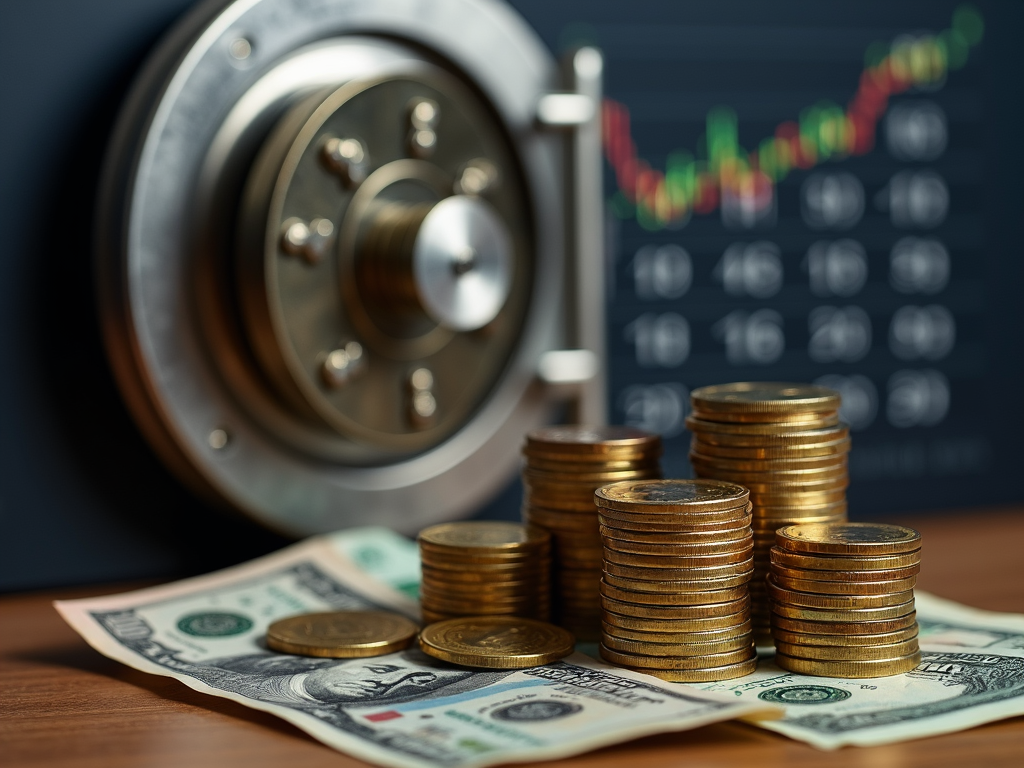In a world where interest rates are dozing like a sleeping dragon, term deposits and savings accounts offer safe oases for your savings. While the term deposit entices with stable but rigid interest rates, the savings account provides flexible, albeit variable, remuneration. These two chapters will guide you through the advantages and disadvantages of these forms of investment and what you should consider to maximize your savings.
Smart Wealth Protection: Benefits and Risks of Term Deposits and Savings Accounts

In a world where profitable options for wealth protection seem to decrease daily, traditional forms of investment like term deposits and savings accounts are back in focus. Both offer unique advantages and specific risks: the right choice heavily depends on individual needs and financial goals.
Term Deposit is the preferred choice for those investors seeking stability and wanting assurance that their capital is secure for a predetermined time. The main advantages are fixed interest rates, which provide protection from market rate fluctuations and thus guarantee a planned return. In times of low interest rates, this is particularly beneficial for those wishing to benefit from a secure interest rate. The attractiveness of term deposits is also enhanced by the legal guarantee of deposits, which offers protection up to 100,000 euros.
However, term deposits also come with challenges. The lack of flexibility is a significant obstacle: the capital is locked in for the entire duration, and in case of an unexpected capital need, this would be extremely disadvantageous. Although early termination is possible, it often incurs costs that can negate the advantages in terms of expected interest.
On the other hand, there is the Savings Account, which represents flexibility and is often colloquially known as an “emergency reserve.” This form of investment allows access to the invested capital at any time, making it ideal for emergencies. Furthermore, the variable interest rate can be advantageous if rates increase again, as this adjustment would represent a real gain for investors.
However, the savings account also has its disadvantages. The uncertainty of the interest rate can be discouraging, especially in times of falling rates, which can lead to a decrease in achievable returns. Additionally, interest rates are often lower than those for term deposits, which limits long-term earning potential.
Current market developments indicate a slight adjustment of interest rates for term deposits and savings accounts, triggered by changes in European reference interest rates. This creates attractive offers but does not render the need for careful selection obsolete.
Ultimately, the choice between term deposit and savings account depends on personal preferences and financial goals. While the term deposit impresses with stable interest rates, the savings account stands out for its flexibility. The key to an informed decision lies in understanding your financial priorities and regularly reviewing offers.
Strategic Saving with Term Deposits and Savings Accounts in a Low-Interest Environment

In an era of persistently low interest rates, smart savings management is more important than ever. Term deposits and savings accounts are at the center of discussion, as both forms of investment offer a unique opportunity to secure and grow capital. Your choice between these options heavily depends on your financial goals and how flexible you want to be in accessing your savings.
Term Deposit traditionally represents a more attractive yield option, as it can offer higher interest rates compared to savings accounts. These fixed interest rates ensure clear planning of returns during the investment period. For those who are not afraid of a long-term investment and also seek a degree of security through government deposit guarantees in the EU, the term deposit can be an excellent choice. However, one must be aware of the limited flexibility. Early withdrawal of funds from a term deposit can result in significant financial disadvantages, making this type of investment less attractive for short-term liquid reserves.
On the other hand, the Savings Account offers the benefits of maximum flexibility. The ability to access capital at any time makes savings accounts an ideal place to manage your so-called “emergency reserve fund” – funds that need to be quickly available to cover unexpected expenses or to be reallocated in response to rising rates. The variable interest rate, which makes attractiveness strongly tied to the current market situation, can be both an advantage and a disadvantage. In particular, during periods of low interest rates, returns through savings accounts tend to be lower.
A strategic use of these products can maximize your investment outcomes. A smart mix of term deposits for secure and long-term returns and savings accounts for flexible liquidity can stabilize your finances without taking excessive risks. Current attractive offers in the term deposit sector, such as those from Haitong Bank or Banca Progetto, promise interest rates around 2.75% to 2.76% for average durations – an interesting offer in today’s rate climate. On the other hand, banks like Consorsbank offer attractive rates up to 3.15% for savings accounts, which should be considered, especially concerning short-term liquidity needs.
In summary, your choice between term deposit and savings account should be closely related to your financial flexibility. It is important to regularly check the current interest rate offers from various providers, always positioning the yield in the context of your individual goals and the security measures of the providers. The solidity of the bank and the deposit guarantee play a crucial role in the decision to accept or reject an offer. This way, you will stay informed and optimally prepared to shape your long-term financial future.